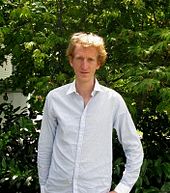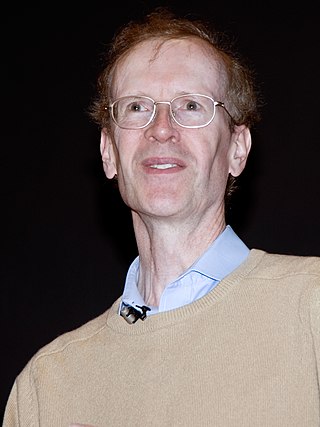
Sir Andrew John Wiles is an English mathematician and a Royal Society Research Professor at the University of Oxford, specialising in number theory. He is best known for proving Fermat's Last Theorem, for which he was awarded the 2016 Abel Prize and the 2017 Copley Medal by the Royal Society. He was appointed Knight Commander of the Order of the British Empire in 2000, and in 2018, was appointed the first Regius Professor of Mathematics at Oxford. Wiles is also a 1997 MacArthur Fellow.
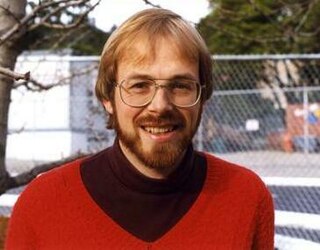
Richard Lawrence Taylor is a British mathematician working in the field of number theory. He is currently the Barbara Kimball Browning Professor in Humanities and Sciences at Stanford University.
The Rouse Ball Professorship of Mathematics is one of the senior chairs in the Mathematics Departments at the University of Cambridge and the University of Oxford. The two positions were founded in 1927 by a bequest from the mathematician W. W. Rouse Ball. At Cambridge, this bequest was made with the "hope that it might be found practicable for such Professor or Reader to include in his or her lectures and treatment historical and philosophical aspects of the subject."
John Smith (1721–1797) was a Scottish physician and academic.

Nigel James Hitchin FRS is a British mathematician working in the fields of differential geometry, gauge theory, algebraic geometry, and mathematical physics. He is a Professor Emeritus of Mathematics at the University of Oxford.

The Department of Computer Science is the computer science department of the University of Oxford, England, which is part of the university's Mathematical, Physical and Life Sciences Division. It was founded in 1957 as the Computing Laboratory. By 2014 the staff count was 52 members of academic staff and over 80 research staff. The 2019, 2020 and 2021 Times World University Subject Rankings places Oxford University 1st in the world for Computer Science. Oxford University is also the top university for computer science in the UK and Europe according to Business Insider. The 2020 QS University Subject Rankings places The University of Oxford 5th in the world for Computer Science.

Robin James Wilson is an English mathematician. He is a emeritus professor in the Department of Mathematics at the Open University, having previously been Head of the Pure Mathematics Department and Dean of the Faculty. He was a stipendiary lecturer at Pembroke College, Oxford and, as of 2006, Gresham Professor of Geometry at Gresham College, London, where he has also been a visiting professor. On occasion, he teaches at Colorado College in the United States. He is also a long standing fellow of Keble College, Oxford.

Dame Frances Clare Kirwan, is a British mathematician, currently Savilian Professor of Geometry at the University of Oxford. Her fields of specialisation are algebraic and symplectic geometry.

Green Templeton College (GTC) is a constituent college of the University of Oxford in the United Kingdom. The college is located on the former Green College site on Woodstock Road next to the Radcliffe Observatory Quarter in North Oxford and is centred on the architecturally important Radcliffe Observatory, an 18th-century building, modelled on the ancient Tower of the Winds at Athens. It is the university's second newest graduate college, after Reuben College, having been founded by the historic merger of Green College and Templeton College in 2008.
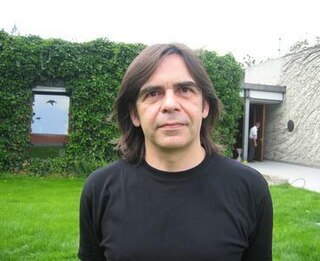
Endre Süli is a mathematician. He is Professor of Numerical Analysis in the Mathematical Institute, University of Oxford, Fellow and Tutor in Mathematics at Worcester College, Oxford and Adjunct Fellow of Linacre College, Oxford. He was educated at the University of Belgrade and, as a British Council Visiting Student, at the University of Reading and St Catherine's College, Oxford. His research is concerned with the mathematical analysis of numerical algorithms for nonlinear partial differential equations.

The position of Savilian Professor of Geometry was established at the University of Oxford in 1619. It was founded by Sir Henry Savile, a mathematician and classical scholar who was Warden of Merton College, Oxford, and Provost of Eton College, reacting to what has been described by one 20th-century mathematician as "the wretched state of mathematical studies in England" at that time. He appointed Henry Briggs as the first professor. Edward Titchmarsh said when applying that he was not prepared to lecture on geometry, and the requirement was removed from the duties of the post to enable his appointment, although the title of the chair was not changed. The two Savilian chairs have been linked with professorial fellowships at New College, Oxford, since the late 19th century. Before then, for over 175 years until the middle of the 19th century, the geometry professors had an official residence adjoining the college in New College Lane.
The Oxford University Invariant Society, or 'The Invariants', is a university society open to members of the University of Oxford, dedicated to promotion of interest in mathematics. The society regularly hosts talks from professional mathematicians on topics both technical and more popular, from the mathematics of juggling to the history of mathematics. Many prominent British mathematicians were members of the society during their time at Oxford.
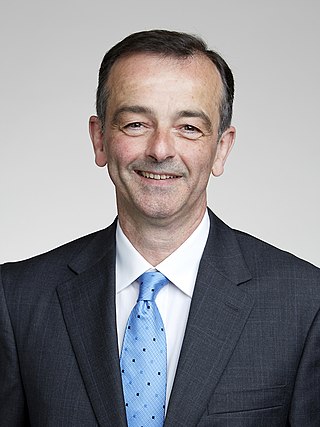
Martin Robert Bridson is a Manx mathematician. He is Whitehead Professor of Pure Mathematics at the University of Oxford, and the president of the Clay Mathematics Institute. He was previously the head of Oxford's Mathematical Institute. He is a fellow of Magdalen College, Oxford and an honorary fellow of Hertford College, Oxford. Specializing in geometry, topology and group theory, Bridson is best known for his work in geometric group theory.
Philip Candelas, is a British physicist and mathematician. After 20 years at the University of Texas at Austin, he served as Rouse Ball Professor of Mathematics at the University of Oxford until 2020 and is a Fellow of Wadham College, Oxford.
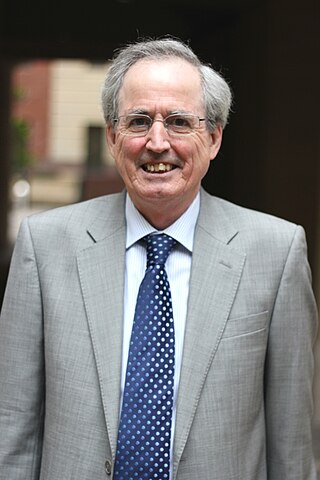
Raymond Flood is Emeritus Fellow and a member of the Continuing Education Department at Kellogg College, Oxford, and has been a Professor of Geometry at Gresham College.
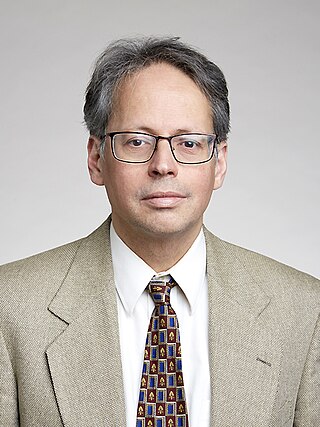
Mark William Gross is an American mathematician, specializing in differential geometry, algebraic geometry, and mirror symmetry.
Xenia de la Ossa Osegueda is a theoretical physicist whose research focuses on mathematical structures that arise in string theory. She is a professor at Oxford's Mathematical Institute.
Helen M. Byrne is a mathematician based at the University of Oxford. She is Professor of Mathematical Biology in the university's Mathematical Institute and a Professorial Fellow in Mathematics at Keble College. Her work involves developing mathematical models to describe biomedical systems including tumours. She was awarded the 2019 Society for Mathematical Biology Leah Edelstein-Keshet Prize for exceptional scientific achievements and for mentoring other scientists and was appointed a Fellow of the Society in 2021.
Anna Seigal is a British mathematician who conducts research in applied algebraic geometry at Harvard University and the University of Oxford. She was awarded the 2020 SIAM Richard C. DiPrima Prize and the Bernard Friedman Memorial Prize in Applied Mathematics.
Francis Brown is a Franco-British mathematician who works on Arithmetic geometry and Quantum Field Theory.





